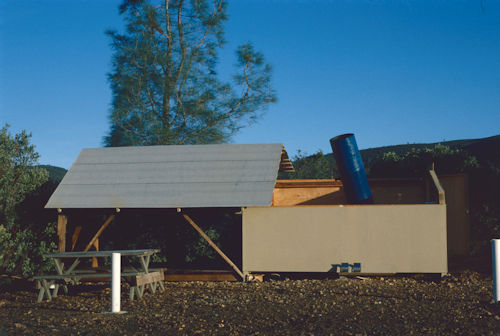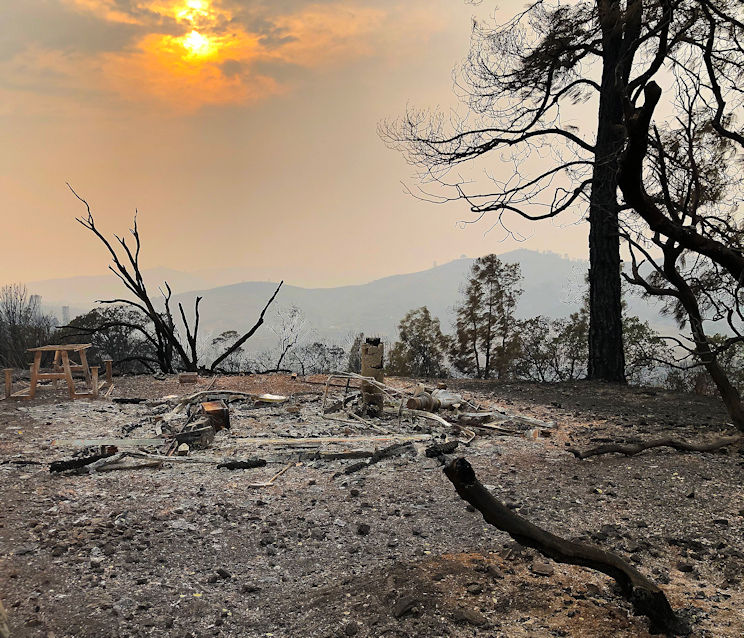TVS History
The Tri-Valley Stargazers has its origins in an astronomy club that was sponsored by the Lawrence Livermore National Laboratory Recreational Group. In 1979 LLNL changed its rules to require that at least 50% of the club members had to be employees or retirees. In the interests of making the club available to a wider audience including children, LLNL employees Pat Walker, Jack Marling, Bill Faatz, Jim Zumstein and many others started the Tri-Valley Stargazers Astronomy Club. The earliest records show 31 members, and the first meetings may have been held at LLNL and the Asbury United Methodist Church in Livermore before moving to the Unitarian Universalist Church Fellowship Hall. Meetings regularly included a "What's Up" talk by a member before the featured presentation, which became permanent feature of our gatherings.Jack and Pat started using the club's dark sky site soon after the club was formed. Records show that on 12/09/82 Jack signed a $100 lease agreement with the owners of the property where the site is located. Then a road was built and the south side of the hill was terraced so multiple observers could use the site without blocking each other's views. The site had been referred to by the name of the ranch for many years (a name which we no longer speak, to avoid unauthorized access). Under President David Anderson the board of directors named the building the "Sky Shack". After a vote by the Board in September 1998, the site was named "Hidden Hill Observatory". For many years in the 1990's and 2000's, star parties were held every month at the site.
Jack, Pat and Roger Peterson built the original slide-off roof observatory in 1982-1983, and Jack built the observatory's Coulter 17.5" telescope and mount, which were operational in 1983. Jack donated the observatory to the club later. Click on the following image to see early photos at H2O.

On August 31 2019, we finished a complete renovation of the observatory, including beefing up the foundation, replacing half the flooring, replacing the battery and solar charger, and redesigning the electrical system. We replaced the mount with a modern AP1200 mount that had been donated to the club. This effort was led by Gert Gottschalk and Chuck Grant.
Herb Quick started building his fiberglass Home-Dome with Meade DS16 telescope in 1999 and donated it, unfinished, to the club in 2007 upon his death. The Herb Quick Observatory is still on the site at H2O. In the early days a log book was kept to keep track of the site's usage. The dome remained unused until 2019, when Ross Gaunt undertook to restore it. He completed repairs to make it water-proof and rodent-proof, and added new floor and carpeting. He also installed a new electrical system with a battery and solar charger. We purchased a new Software Bisque mount and installed a Celestron C14 that had been donated to the club.
In August of 2020, a large wildfire of nearly 400,000 acres burned through the area. It destroyed the slide-off roof observatory and the equipment inside. Fortunately the dome survived with almost no damage. You can see pictures of the damage done and our reconstruction progress by clicking the following picture:

You can contribute to our construction fund by donating here. We have received a major donation to the TVS by David Friedberg, CEO of The Production Board, of a 20" PlaneWave Corrected Dall-Kirkham (CDK) Telescope, a Mathis MI-750 Fork mount, and a motorized 3.5 meter Observa-DOME! This donation was brokered by Prof. Alex Filippenko of UC Berkeley. See here for a list of other donors, to whom we owe many thanks.
Early observers at H2O included Pat Walker, Jack Marling and Steve Gottlieb. Jack and Steve were especially interested in planetary nebulae, and were able to observe some nebulae that had never been seen before, some of which were as dark as 16th magnitude. They published their findings in the Webb Society Quarterly Journal. The site holds the record for the largest number of amatuer planetary nebulae discovery verifications.
The club opened a bank account in March of 1980, was incorporated in May, and obtained tax-free status as 501(c)(3) nonprofit organization in 1992. TVS presidents have included Dave Anderson, Rich Combs, Alan Gorski, Alane Alchorn, Chuck Grant and most recently Roland Albers starting in 2018.
Mike Rushford set up a computer bulletin board service in November of 1992. This grew into his Eyes-on-the-Skies remote controlled solar observing web site, which was featured in a 1995 Sky and Telescope article.
Dave Anderson set up our first web site. It has appeared under a variety of names, including http://www.tdl.com/~dma/tvs, http://www.tdl.com/~tvs, and http://www.hooked.net/~tvs. Debbie Dyke served as webmaster for a while. then Chuck Grant took over the job in June of 1999. He changed the domain name to the current one, www.trivalleystargazers.org at that time. Hilary Jones has been webmaster since September 2011. The web site was hosted for free by Ron Wickersham for many years, but Hilary moved it to a professional hosting service (iPage) in 2014.
The Prime Focus newsletter has been published in one form or another for many years. Editors included Hans de Moor, Alain Alchorn, Mike Rushford, Debbie Dyke (who established the current format), and Ken Sperber, who has been editor since March 2010.
Lifetime members have included Jack Marling, Alane Alchorn, Rich Combs, Rich and Barbara Green, Don Machholz, Alan Gorski, and Debbie Dyke. Many of these people have served in several TVS officer positions at one time or another.
Notable members of the Tri-Valley Stargazers have included Jack Marling (founder of Lumicon), Ron Bissinger (past CEO of Aplegen/SBIG), Axel Mellinger (Milky Way panorama), Don Machholz (comet discoverer), Chuck Vaughn (astrophotographer published in S&T), Steve Gottlieb (corrections to NGC and IC catalogs), and Rick McWilliams (inventor of digital settings circles and a telescope manufacturer).
Telescope making workshops were held for several years led by Rich Combs and (now famous optician) Carl Zambutto. Three telescopes from these workshops have won awards at the Riverside Telescope Makers Convention. 15 year old Shannon Cullen won an RTMC Honorable Mention award for his 5.5 inch f/12 Dob. This was the first RTMC award to an active TVS member. Debbie Dyke won and Honorable Mention in 1997. Maggie Halberg won a merit award for her 8 inch f/6 (merit award is the highest of the two levels of RTMC awards). TVS member Carter Roberts (long time EAS president, Chabot Space and Science Center co-founder, RTMC board, noted astrophotographer, etc. etc.) also has won several RTMC awards prior to joining TVS.
TVS occasionally awards a member the "Jack Marling Award" for outstanding long term contributions to the Trivalley Stargazers. The award includes lifetime membership. Award winners have included Jack Marling, Alane Alchorn, Rich Combs, Rich and Barbara Green, Don Machholz, Alan Gorski, and Debbie Dyke. Many of these people have served in several TVS officer positions at one time or another. Without their services, TVS would probably not still exist.
Debbie Dyke won the Helen Pillans award in 2005. Debbie performed many vital functions for TVS and EAS for many years, including restoration work on Chabot's 100 year old refractors and operating their 36 inch telescope for many visitors.
TVS members Richard Ozer won the WAA's G. Bruce Blair award in 2013 and Carter Roberts won in 2007.
The AANC has recognized members Carter Roberts (1991), David Rogrigues (1994), Chuck Vaughn (1997) and Alane Alchorn (2001) for outstanding and continuous support in distinguishing and fostering Amateur Astronomy.
Debbie Dyke and Paul Caswell started compiling the club's history back in 2000 with help from Chuck Grant.


